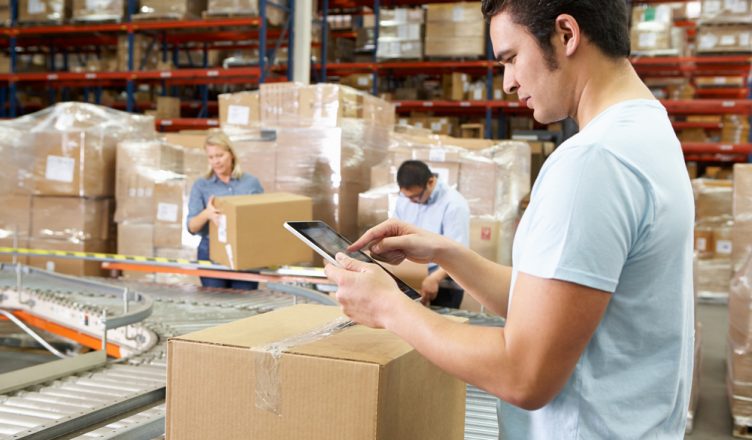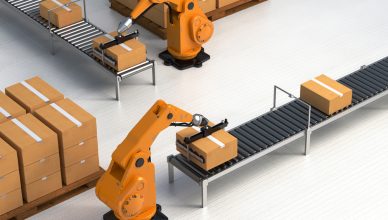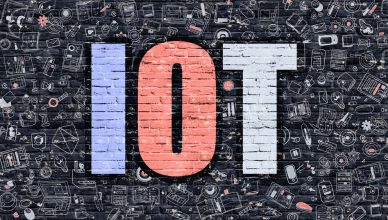No industry is safe from the transformative power of technology.
Take the news industry, for example. The rise of the internet has forced newspapers to shift their focus from physical print to online publishing. The internet has changed many businesses, in fact, allowing for the formation of entire new industries (such as e-commerce) while rendering other industries entirely obsolete. The internet, the cotton gin, the printing press, and many other inventions have had an enormous impact on commerce. Technology changes, but its power to influence business remains the same.
The $4 trillion logistics industry is no different. In recent years, technology has played an especially big role in shaping the logistics industry. Smartphone apps and GPS tracking technology has made it easier for companies to communicate with their off-site drivers. Also, route optimization software automatically performs a task (planning optimal routes, that is) that takes hours to do by hand.
Just now, at this very moment, technology is being developed that will change the logistics industry even more.
But what exactly is being developed? And how is it going to change the industry?
To get the answers to those questions, we turned to the experts. This is what they said:
#1 Drones
Adam Phillips, Sales and Marketing Manager of Lookup.com, said:
“Drones for logistics will be a bonus. The ability in built up areas to drop parcels off at the door and skip out on the traffic creates faster delivery cycles.”
Phillips isn’t alone in his belief. Many top logistics companies are working to incorporate drones into their operations. DHL has its Parcelcopter drone, and the Amazon Prime Air drone has been in development for quite sometime.
Don’t be surprised if drones lugging packages across the sky is a familiar sight soon.
#2 Last Mile Delivery
Joel Ritch, Progistics Distribution’s CEO, said:
“The future of logistics is last mile delivery, which is more complex and challenging than technology companies realize. It will take companies with proven logistics experience to lead the charge.”
For those not well-versed in logistics lingo: “last mile delivery” refers to the part of the delivery process where the package is actually delivered to the customer. You see, it’s rare for a package to go directly to the customer – first, the item is sent from a warehouse to a distribution center. It might go from one distribution center to another if the customer is located a few states away from the original warehouse. Then, the item is shipped from the nearest distribution center to the customer. That’s the last mile.
Auto giant Mercedes-Benz is already developing a van to make last mile deliveries more efficient.
Last mile deliveries account for 28% of transportation costs – this is known as the “last mile problem”. To solve this problem, logistics companies should embrace last mile delivery optimization software that will reduce these costs and ensure more efficient last mile deliveries.
Want To See For Yourself How Route4Me Can Boost Your Profits?

Read the following article to learn more about how automated route planning can improve last mile deliveries:
How Route Scheduling Software Can Make Last Mile Deliveries Efficient
#3 Risk Management
Cindi Hane, VP at Elemica, said:
“Recent constraints like asset shortages and natural disasters have elevated the need for supply chain collaboration and visibility solutions. New technologies and data sources will fuel the next generation of risk management and visibility solutions.”
This is why routing optimization software with GPS tracking is so popular among logistics companies.
How does GPS tracking work?
GPS tracking helps you visualize your drivers’ activities on a map in real time so that you can immediately know if a field rep or driver makes an unauthorized stop or takes longer than planned at a specific destination.
GPS tracking gives you 100% visibility over your drivers’ activities. You’ll know when your drivers are speeding up. You’ll know if a driver is broken down in the middle of the road. Basically, you’ll know everything.
If something goes wrong, you’ll know, and you’ll be able to immediately contact the customer and the driver and sort out the situation.
Many route optimization programs also come with a feature that allows you to anticipate weather situations. You can pull drivers off the road when it looks like conditions will be bad. This, of course, is great for driver safety.
Watch the video below to learn more about GPS tracking:
#4 Increased Mobility
Danielle Hutchins from FreightCenter said:
“To meet the ELD 2017 deadline, many fleets will choose the simplest approach of requiring drivers to use mobile devices, increasing electronic logging software and mobile app development and sales.”
Mobile devices are more than just a regulatory hurdle to jump through, though – they provide businesses with many benefits, including improved communication and employee efficiency (non-jargon translation: your drivers get to their destinations faster).
With mobile-enabled route optimization software, you can plan and distribute routes from your smartphone or tablet, and your drivers can even access all the route details on their smartphones as well. More communication means fewer delivery-delaying problems.
Also, our software comes with geofencing technology that automatically records the time and date of every delivery, eliminating the need for your drivers to manually check in and check out. These features streamline the delivery process and help logistics companies focus more on growth.
#5 Streamlined Transportation Management
Carlos Hernandez from iContainers said:
“The biggest change coming in logistics and transportation will be technology to introduce a more streamlined, transparent process that eliminates hidden costs and extra fees.”
Hidden costs silently damage logistics companies, making it incredibly important to design a transparent, waste-free process.
With Route4Me route planner, you can view graphs and other easy-to-understand visualizations of your driving distance, fuel costs, profit-per-route, etc. This detailed business data allows you to identify and eliminate hidden costs.
#6 Same Day Delivery
Simon Cohen, Sales and Marketing Manager of Redspot Transport, said:
“Same day delivery is becoming more and more integrated into major business and distribution platforms, like Amazon, for example. Because of this it is becoming more and more expected by customers. Eventually, businesses who are not utilizing the same day method will start to lose their clientele to competitors who do, even if the customer doesn’t actually need same day delivery. Implementing the option in your delivery methods and finding a way to make it cost-effective is the best way to stay ahead of the curve because the evolution of logistics is heading towards same day as a mainstay.”
It’s easy to figure out that customers would love to get their packages on the same day that they order them, but it’s not so easy to actually pull that task off.
But when you use a routing app to produce 100% optimized routes, it is possible.
Watch the following video to learn how our software works:
Some things never change. Logistics companies – and businesses of all kinds, really – will always need to provide excellent customer service and implement strong cost controls to succeed.
But at the same time, there are certainly many things that are changing, mostly due to new technology (here are some transportation technology examples). To stay competitive in the industry, you should consider:
- Investing in drones to deliver goods
- Using final mile delivery optimization software to improve driver efficiency
- Using route mapping software to manage risks
- Implementing the use of mobile apps to increase mobility
- Eliminating hidden costs with route optimization software
- Offering same-day delivery services
What do you think the future of the logistics industry will look like? Let us know in the comments section below.
Want To See For Yourself How Route4Me Can Boost Your Profits?




